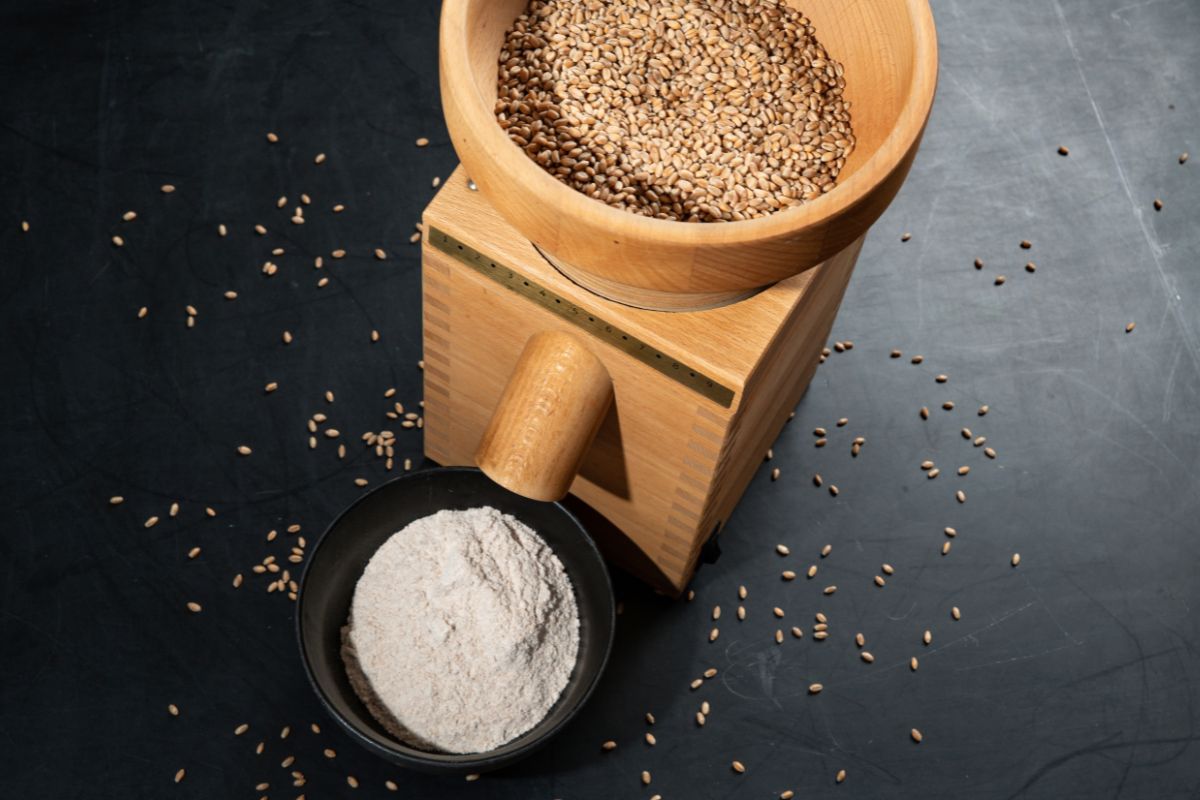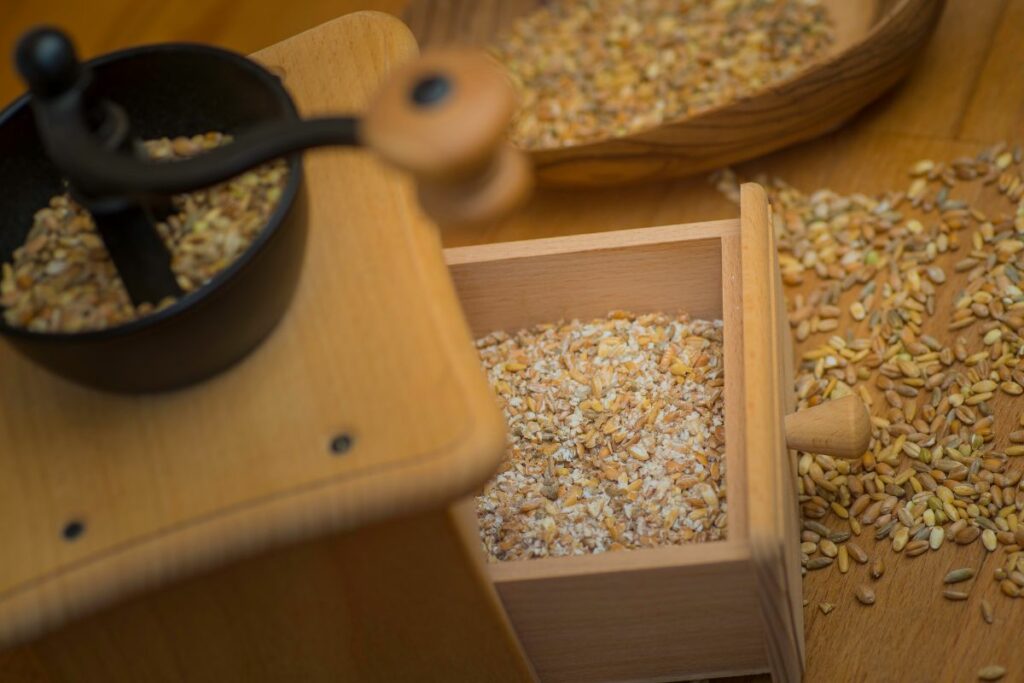Due to its versatility and sustainability, grain is often considered one of the best gifts from nature.
If you’re unfamiliar with grain, it is a basic ingredient used by most of the world’s population thanks to its ease of growth and affordability.
It is essential in creating delicious foods and the varieties we have access to now have grown exponentially since our predecessors came across the grain.
It is one of those ingredients that you probably use to cook healthy meals every day.
However, have you ever considered the nutrition and quality of your grains? Since the product is readily available, many people take quality brands for granted.
If you purchase organic flour, you’ll have peace of mind it isn’t filled with tons of artificial ingredients, however, for some, this simply isn’t enough.
Therefore, you may want to look into milling your own grains as your next best option. With this in mind, in this article, we will explore all the health benefits of milling your own grains.
Let’s get straight into it!
What Are Whole Grains?
Grains are the result of seeds from a plant that looks similar to grass known as cereals. The most common varieties include rice, wheat, and corn.
However, some seeds from non-grass plants – otherwise known as pseudocereals – are also known as whole grains, these include quinoa, amaranth, and buckwheat.
There are three parts to a whole-grain kernel. These include:
- Germ – This is the inner layer that contains plant compounds, proteins, vitamins, and minerals.
- Endosperm – The central part of the kernel is made up of carbs.
- Bran – This is known as the hard, outer layer. Here, you’ll find antioxidants, fiber, and minerals.
Grains can be cracked, rolled, or crushed. Nonetheless, as long as the kernel contains these three essential parts, then they are considered to be whole grains.
Sometimes, the germ and bran are removed, resulting in only the endosperm being present, these are known as refined grains.
Even though refined grains are enriched, they have some minerals and vitamins added back. That being said, they are not as nutritious or healthy as whole grains.
Wholegrain varieties include:
- Popcorn
- Oatmeal
- Quinoa
- Millet
- Whole rye
- Brown rice
- Wheatberry
- Wild rice
- Buckwheat
- Bulgur
- Barley
- Freekeh
- Sorghum
Any products composed of these foods are known as whole grains. This can include varieties of pasta, breakfast cereals, and bread.
Benefits Of Milling Your Own Grains

More Nutritious
There are many different factors that can influence the quality of your flour, this includes the conditions your grain was grown in, the size of production, and the milling process.
When produced on a mass scale, the majority of the flour’s naturally occurring nutrients, vitamins, antioxidants, and minerals are lost due to the manufacturing process.
Most of the nutrition comes from the germ and bran of the kernel. However, this is removed in commercial flours due to the oil found in these parts – allowing the flour to last longer on the shelf.
Even if you were to purchase ‘enriched’ flour, you’re only provided with a small amount of the nutrition that naturally occurs in the grain.
Choose Your Own Grain
When milling your own flour, you’re able to choose what type of flour you’re using and in what ways all in the comfort of your kitchen. For instance, you can choose gluten-free options if your household is gluten intolerant.
Likewise, there are other options for the other members of your family to enjoy, too.
Plus, milling your own flour allows you to choose rare grains that are hard to find and inexpensive unless produced at home.
Cost-Effective
Typically, purchasing organic, whole-grain bread can be expensive. So, one way to combat this is by making your own.
Even when taking into consideration the price of an electric mill, you should only expect to pay 25-50 cents per loaf of bread when milling your own at home – and this is only bread!
When it comes to flour as an ingredient, the possibilities of what to create are endless. Even if you only make a couple of loaves a week, you’re sure to pay back your mill within the year.
If you’re worried about potential waste caused when using whole grain to mill flour, there’s no need! As long as you keep your milled flour in a cool, dry place, it should last a week or more.
This way, you can keep a specific amount of milled flour stored in your cupboard ready for your recipes. To make sure you aren’t wasting any, simply back as many loaves as you can with the freshly milled flour.
Then, simply freeze the bread and take it out when ready to eat.
Better Taste
Thanks to the natural oils remaining present in the grain kernels, you’re rewarded with a lightness to your flour; thus, a better-tasting bread. The result is a fluffier and lighter bread, as well as other baked goods.
Likewise, when milling your own flour at home, you’re able to control the texture, too. If the members of your family prefer a more coarse-textured bread, then you can easily provide this to them.
Additionally, you’re provided with a fresher and tastier loaf as a result. Once you’ve made your own bread from milled flour, you won’t be able to go back to store-bought bread ever again.
Choosing The Right Flour Mill
When you first start out your milling journey, you may feel hesitant at first. If you have never done it before it can seem time-consuming and a massive commitment to simply produce your own flour.
While some people prefer to stick to the old methods of milling four which involves a manual process, most people rely on something that is much faster and takes very little effort. For instance, an electric mill.
However, sometimes a manual mill can come in handy if you happen to lose electricity. That being said, electric ones are far more convenient.
Not only are they extremely easy to use, but all you have to do is plug it in and it’s ready to start milling your flour – it practically does all the work for you!
Within minutes, you’ll have perfectly milled flour. Plus, with a simple switch of the button, you can easily adjust the grind.
Choosing to mill your own flour seems like a no-brainer. You’re rewarded with better nutrition, enhanced tasting, and more cost-effective flour in only a matter of minutes.
Soon, you’ll be milling your own flour to give to all your friends and family in no time!
Bread has never tasted better than when made with freshly milled flour. Plus, your house is going to smell incredible!
Final Thoughts
While the thought of milling your own flour sounds tedious, it is actually extremely easier than you may think.
Plus, in addition to your own milled flour, you’re awarded a range of health benefits that you simply don’t get from store-bought options.
Hopefully, this guide has informed you about the health benefits of milling your own grains.








